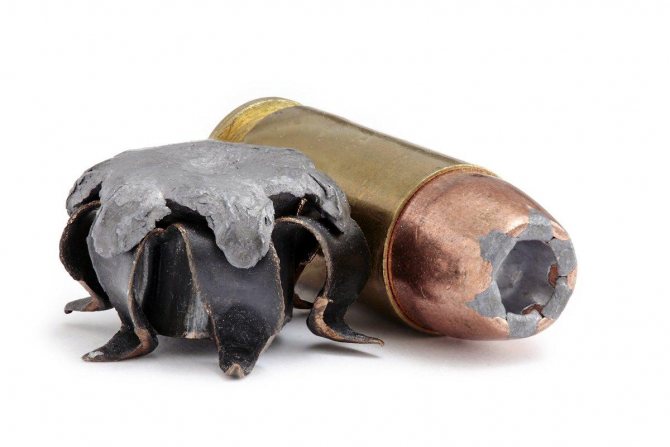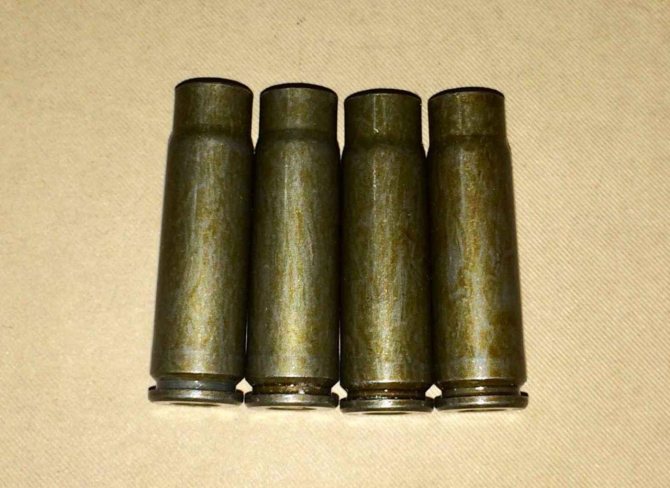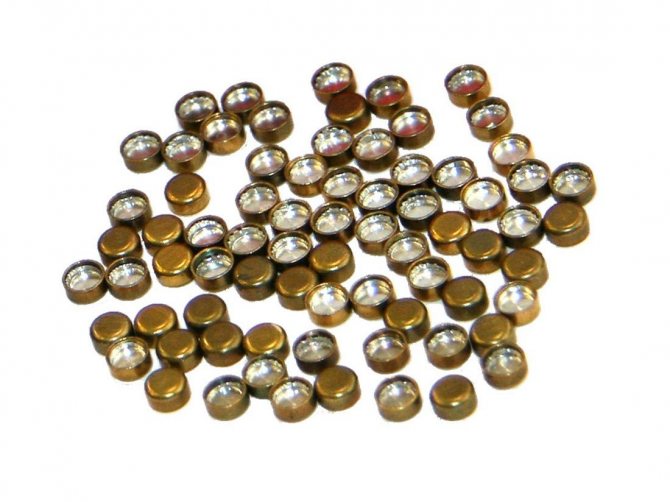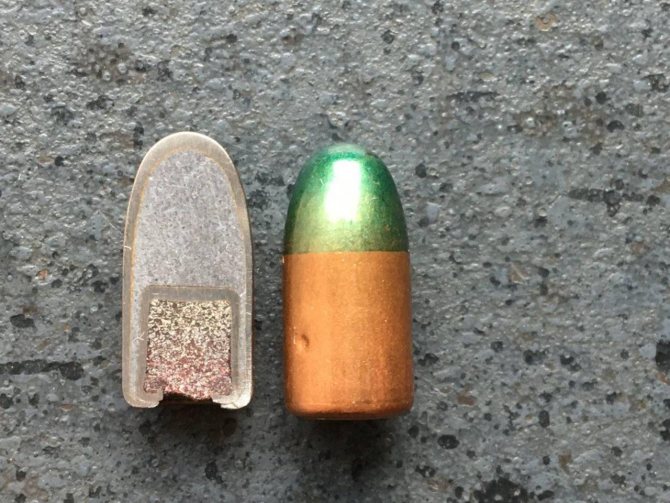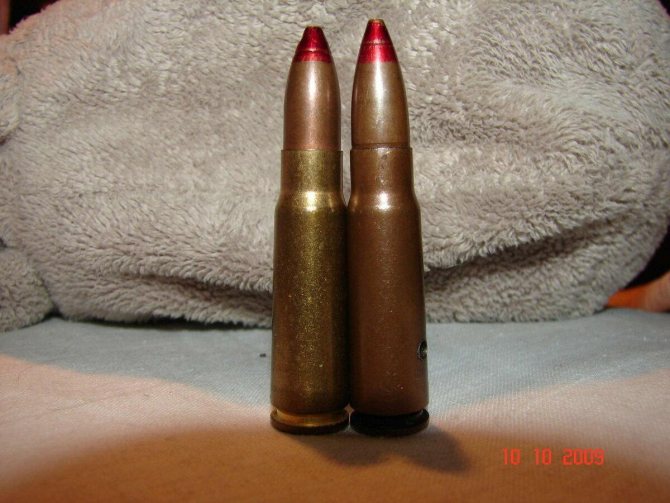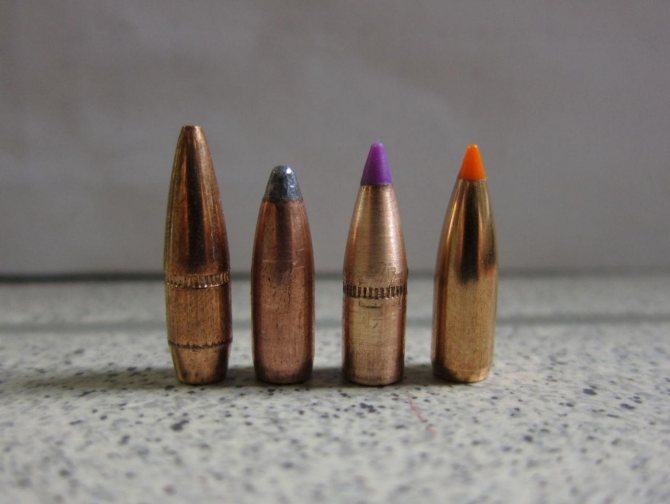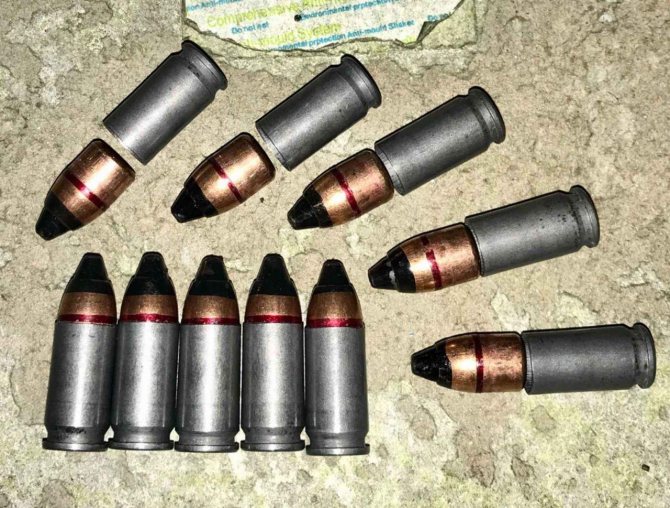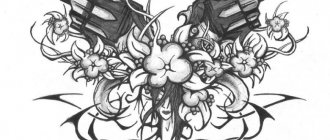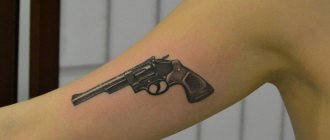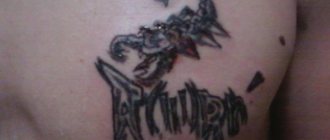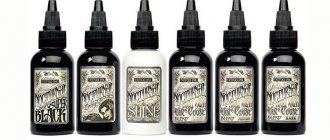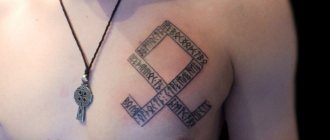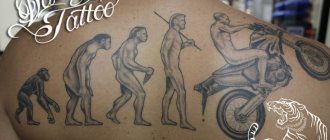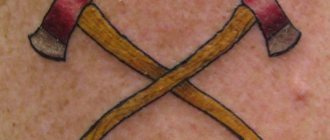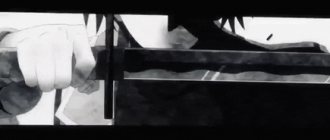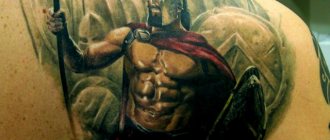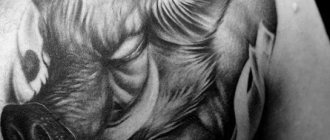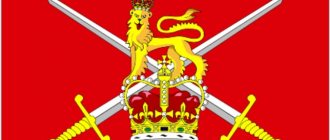There are many tattoos that refer to military symbols. The culture of applying body markings dates back to ancient times. Celtic warriors tattooed it to intimidate the enemy, and the Vikings used it as a talisman in battle. Today, the natives put a tattoo on the body as a sign of a successful battle or hunt. Such a symbol increases a person's rank in the tribe and gives him the status of a winner.
The bullet is a fairly common element of body art. As a rule, it is stuffed with people associated with military service. Basically, such a tattoo is inherent in the male sex, but they occur among women as well. The tattoo has different meanings depending on what meaning the wearer puts into it.
The meaning of the tattoo bullet:
- A sign of physical and moral strength - firmness - self-confidence - the ability to stand up for oneself
This article presents not only a description of the meaning of the image, but also a variety of bullet tattoo sketches. Looking at them, you will determine which type of drawing you like more than others.
Immediately we would like to note that the tattoo bullet is sometimes rated as a military, army, but today only such a meaning of the image is no longer relevant. Such a figure on their bodies are worn by both men and women, sometimes not even related to the security forces.
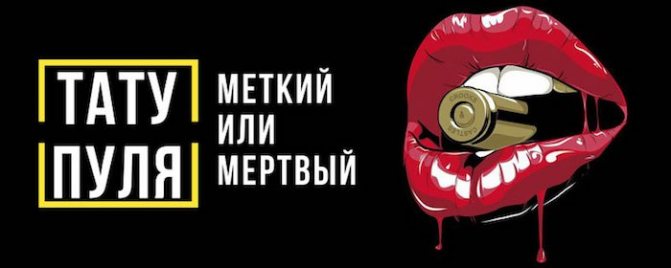
Although, it is clear that in the first place the bullet tattoo is found on the bodies of military men. For example, servicemen applied not only a bullet, but also a weapon, and accompanied the image with other "accessories" and elements indicating in what kind of troops the person served or was serving.
Pay attention!
That is, we have to say, the image was a kind of "stigma", by which servicemen "identified" each other.
The meaning of tattoos for girls
Despite the fact that the tattoo with a bullet is considered a male symbol, it is often chosen and girls. With such a body image, they let others know that they can stand up for themselves and do not need anyone's help.
Such girls have a strong inner core, an extraordinary will and courage. They are able to steadfastly bear the blows of fate and cope with difficult situations. Women with a bullet tattoo are convinced that the need for protection is a human weakness. So they have developed qualities that help them not depend on anyone.
The tattoo for women symbolizes:
- A strong character;
- self-sufficiency;
- self-confidence;
- resilience;
- determination;
- courage.
Photo of the bullet tattoo
It is noteworthy that the bullet tattoo is often accompanied by a blood type sign. This is a very important body drawing - it even saved the lives of its owners. After all, military doctors immediately saw what blood type the wounded soldier and promptly assisted him, began the process of blood transfusion.
Tattoo of a bullet on a finger or other part of the body almost most often is printed in black tones. It can be complemented with red paint. Although there are other shades, but rarely. The black image is good not only for decorating the body, but also to cover the scars. A drawing of this type will always remind its owner of an important experience he has had.
Note!
In some cases, the drawing indicates the loss of a fellow soldier, a close friend who died during combat or combat operations.
This is general information about the bullet tattoo. Below we will talk more about what meaning these drawings carry, depending on who exactly wears them on his body.
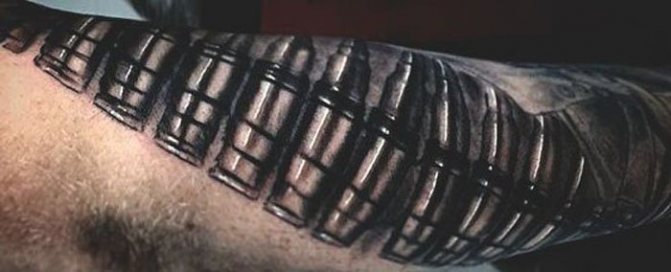

Subcaliber bullets and tungsten carbide tapered barrel: the future of small arms?
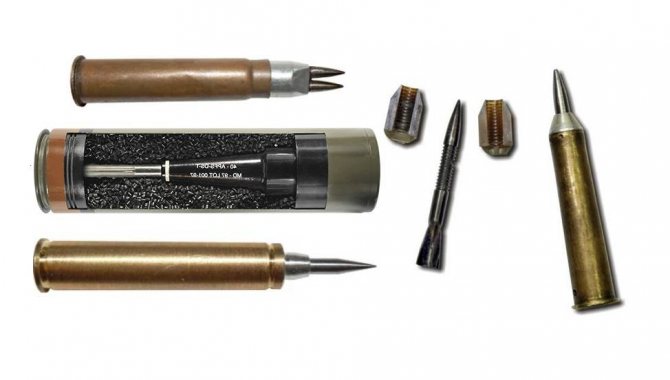

Telescoped cartridge (center) - projectile for the 40mm CTAS (Cased Telescoped Armament System) automatic cannon on a reduced scale
In the article "The Forgotten Soviet 6x49 mm Cartridge Versus 6.8 mm NGSW Ammunition" we looked at one of the possible ways of response to the American NGSW program in case of its successful implementation. Possible ways of small arms evolution in the Russian Federation in case of apparent failure of the NGSW program we have considered earlier in the article "Evolution of the assault rifle in the USSR and in Russia in the context of the American NGSW program".
One of the priority tasks for advanced small arms, which is cited as the reason for the NGSW program, is the emergence of existing and advanced personal armor protection (PIP) equipment in the Russian and Chinese armed forces.
Despite its apparent simplicity, small arms are incredibly effective in destroying enemy soldiers, as the medical statistics of the major military conflicts of the 20th century show, with the cost of re-equipping armed forces even with sophisticated and expensive small arms being only a fraction of the financial cost of other types of weapons.
As we discussed earlier, there are two main ways to increase the armor penetration of a munition: increasing its kinetic energy and optimizing the shape and material of the munition/core of the munition (of course, we are not talking about explosive, shaped charge or poisoned munitions). The bullet or the core for it are made of ceramic alloys of high hardness and high enough density (to increase the weight), harder and stronger they can be made, denser - hardly. Increasing the bullet mass by increasing its dimensions is also practically impossible within acceptable dimensions of handguns. It remains to increase the bullet speed, for example, to hypersonic speed, but even in this case the developers face enormous difficulties in the form of lack of necessary powders, extremely fast wear of the barrel and high recoil acting on the shooter.
Nevertheless, there are several ways to improve bullet penetration: the use of sub-caliber bullets and tapered barrels.
Subcaliber bullets
Active research on the possibility of using subcaliber bullets (tipped subcaliber bullets, SCBs) in firearms has been conducted since the middle of the XX century. Before that, the creation of armor-piercing subcaliber projectiles (APSC) was considered more in-demand and promising, which, in fact, was confirmed by their creation and successful operation to the present day.
Work on APFSDS began in the USSR in 1946, and from 1960 the possibility of using them in high-speed automatic guns was studied at the NII-61 under the leadership of A.G. Shipunov. At the same time at that time work was going on to create a new 5.45 mm automatic ammunition. At the same time, work was underway to create a new 5.45 mm automatic rifle ammunition.
The conceptual design was developed in the shortest possible time by D. И. Shiryaev. However, the theoretical findings were not confirmed experimentally. The real ballistic coefficient of the arrow-shaped bullets turned out to be twice as worse than the calculated one, the pressed pallet was torn off the bullet, the production of cartridges with the SRF required labor-intensive turning, milling, locksmithing and subsequent manual assembly.
In 1962 tests were conducted on the killing effect of the arrow-shaped bullets, which turned out to be inferior not only to military requirements for advanced ammunition, but also to that of the existing standard cartridges.


A sketch of a cartridge with a rifled subcaliber bullet designed by D. I. Shiryaev. A photo of the first version of the arrow-type bullet and mockups of the redesigned prototype 7.62/3-mm ammunition of 1963-64.
In 1964 the work on the arrow-shaped bullets was resumed by I. P. Kasyanov and V. A. Petrov, who performed the preliminary design of the 10/4.5 mm rifle-machine gun cartridge with a muzzle velocity of 1300 m/s. In 1965 the young designer Vladislav Dvoryaninov was appointed as the responsible executor of the promising cartridge.
In the process of designing the new cartridge the following solutions were implemented to increase the killing effect: a flattening in the front part of the cartridge to ensure the tilting moment when hitting the dense tissues and a cross groove along which the arrow was bent under the action of the arrow's tilting moment.
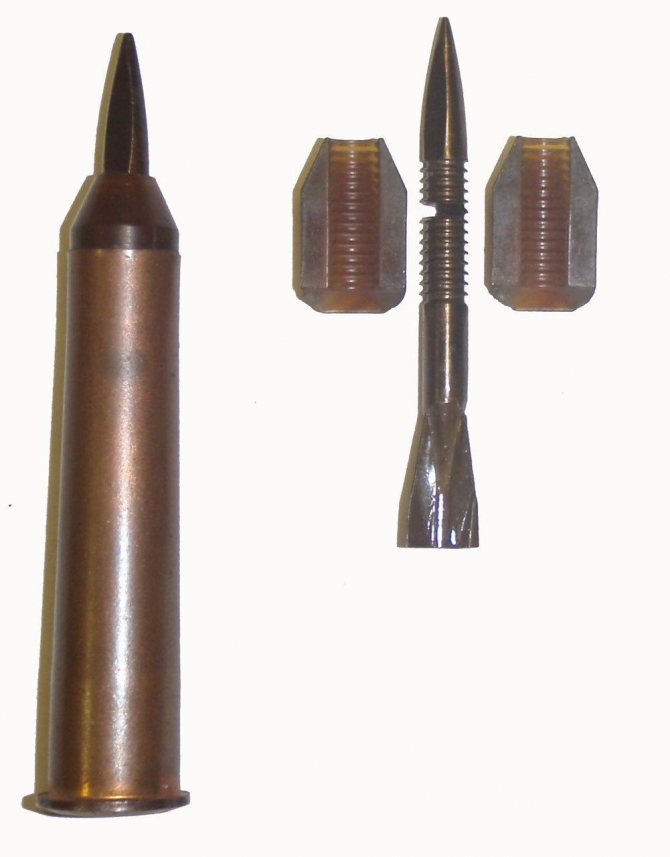

The cartridge and the 10/4,5 mm Dvoryaninov's rifled sub-caliber bullet
The most difficult task was to improve the accuracy of the subcaliber plated rounds up to the level of the accuracy of rounds fired from rifled barrels. It was necessary to eliminate the influence of the pallet sectors on the SRF at the moment of their separation after the shot leaves the barrel. In 1981 tests of the 10/4.5mm OPP ammunition in the TsNITOCHMASH OPK showed 88-89 mm shot accuracy, while the required accuracy was no higher than 90 mm.
It should be separately noted that the labor intensity of the production of the prototype cartridge with SRP was only 1.8 times higher than that of the standard 7.62 mm rifle cartridge, and the life of the smooth-wall machine-gun barrels when fired with this cartridge exceeded 32,000 rounds. For comparison, the resource of the barrel of the AK-74 assault rifle in 5.45x39 mm caliber is 10,000 rounds, and the PKM machine gun in 7.62x54R caliber 25,000 rounds.
Simultaneously with the development of the basic 10/4.5mm cartridge, the single-shot 10/3.5mm cartridge with a muzzle velocity of 1360 m/s and the three-shot 10/2.5mm cartridge were developed, which could be used as the single round for the assault rifle and light machine gun.
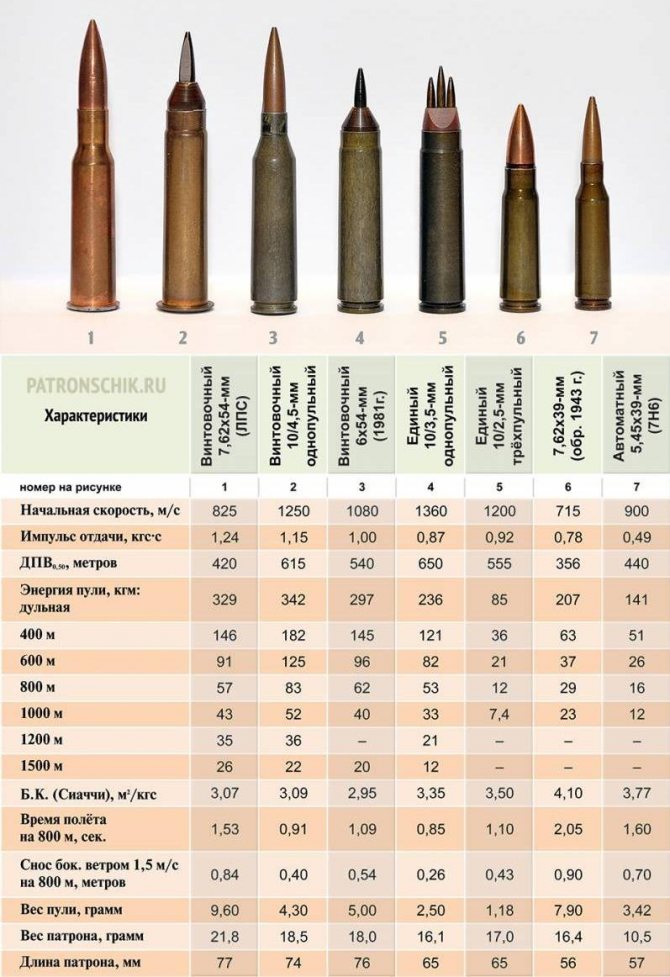

Comparative characteristics of prototype rounds, as well as production and prototype rounds for rifled barrels
The single-shot 10/3.5mm cartridge could be used at longer ranges, while the use of a three-shot cartridge would provide higher killing and stopping power at closer ranges. As we said in the article "Stop Not Kill. Where do you put the comma?", if you consider stopping power as a function of the probability of death from the time the bullet hits the target, then hitting several rounds at once would be highly likely to provide a higher probability of hitting vital organs and, consequently, a higher rate of death.
The OPP cartridges were never adopted. Formally, priority was given to the more classic 6x49mm cartridge for rifled weapons, which we talked about in the article "Forgotten Soviet 6x49mm cartridge vs 6.8mm NGSW cartridge". At the time, the performance of the 6x49mm cartridge was quite satisfactory for the military, and it would be much easier to produce than Rifle ammunition. At the time it was produced, it was much easier to produce than the 6x49mm ammunition, and some tests pointed out a potential flaw of this ammunition, which was too wide dispersion of trays that could hit a soldier in front of the shooter. On the other hand, it has been suggested that these tests were used as a formal reason to prioritize the 6x49mm cartridge, since the earlier tests showed no significant problems with pallet dispersal.
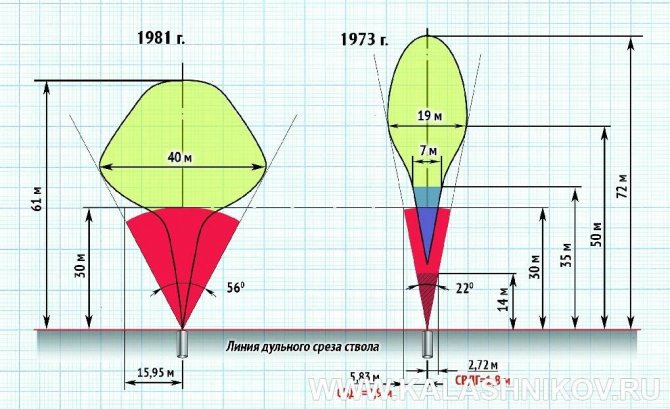

Trap spacing areas of RPF ammunition in tests conducted in 1973 and 1981
But, the breakup of Soviet Union put an end to both the WAR ammo and the 6x49mm ammo research.
The history of subcaliber ammunition for small arms is described in more detail in the article "Arrow-shaped bullets: a path of false hopes or a history of missed opportunities? (Part 1 and Part 2).
Conical barrel
In the article "9mm caliber and stopping power. Why was the 7.62x25 TT replaced by the 9x18mm PM?" mentioned "Gerlich bullet" as an example of creating a small caliber cartridge with marginal stopping power.
The idea of using a tapered barrel originally belonged to German professor Carl Puff, who in 1903-1907 developed a belted rifle for rifled firearms, with a slightly tapered barrel. In the 1920s and 1930s this idea was further developed by the German engineer Gerlich, who managed to create a weapon with outstanding characteristics.
In one of the experimental exemplars of Hermann Goerlich system the bullet diameter was 6.35 mm, mass of the bullet was 6.35 g and its muzzle energy reached 1740-1760 m/s, muzzle energy - 9840 J. At the distance of 50 m the Gerlich bullet made a hole 15 mm in diameter in the steel armor sheet of 12 mm thickness, and in a thicker armor it made a crater 15 mm deep and 25 mm in diameter. The usual bullet of 7.92 mm Mauser rifle left only a small hole of 2-3 mm on such armor.
The shootability of the Goerlich system also was considerably better than that of the ordinary army rifles: 5 bullets weighing 6.6 g at 100 m resulted in a 1.7 cm circle, and 5 bullets weighing 11.7 g at 1000 m resulted in a 26.6 cm circle. Thanks to its high velocity, the bullet was virtually unaffected by wind, humidity and air temperature. The flat trajectory of the bullet made aiming easier.
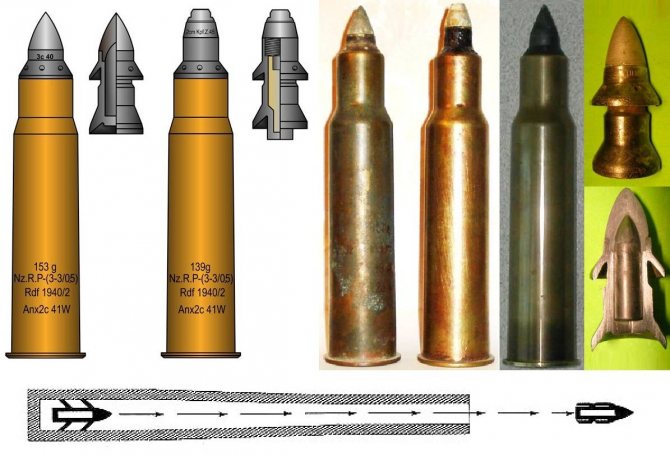

Images and photos of 28/20×188 mm ammunition with Gerlich bullets (projectiles) for German sPzB 41 anti-tank rifle, with general scheme of Gerlich bullets below
Hermann Goerlich system weapons were not widespread, primarily due to low service life of the barrel, estimated at 400-500 rounds. Another possible reason is probably the complexity and high cost of making both the bullets and the weapon.
Technology of prospective automatic rifle (submachine gun)
Why would we need tapered sub-caliber bullets and a tapered barrel in a prospective small arms?
Several determining factors are important here:
1. Feathered subcaliber bullets can be accelerated to substantially higher velocities than rifled bullets without increasing barrel wear.
2. Weapons of Gerlich system allow to significantly increase the speed of the bullet, in fact up to hypersonic speeds, while it can be assumed that the main cause of wear of Gerlich system weapons previously was the presence of rifling in it.
From this we can assume that the prospective small arms could combine a rifled subcaliber bullet and a tapered barrel. The role of obturating rings, programmatically deformable during the firing process, will be played by the pallet of the tipped subcaliber bullet of a certain configuration. In this case, the barrel survivability can be obtained, corresponding to or exceeding the indicators of the existing modern small arms.
Most likely, the most optimal format of the prospective cartridge will be a telescopic ammunition, in which the projectile is completely sunk into the powder charge. In fact, it has two charges. The bouncing charge is triggered first, pushing the bullet/ projectile out of the cartridge case into the barrel and filling the vacant space with the products of the bouncing charge combustion, after which the main high-density charge is ignited.
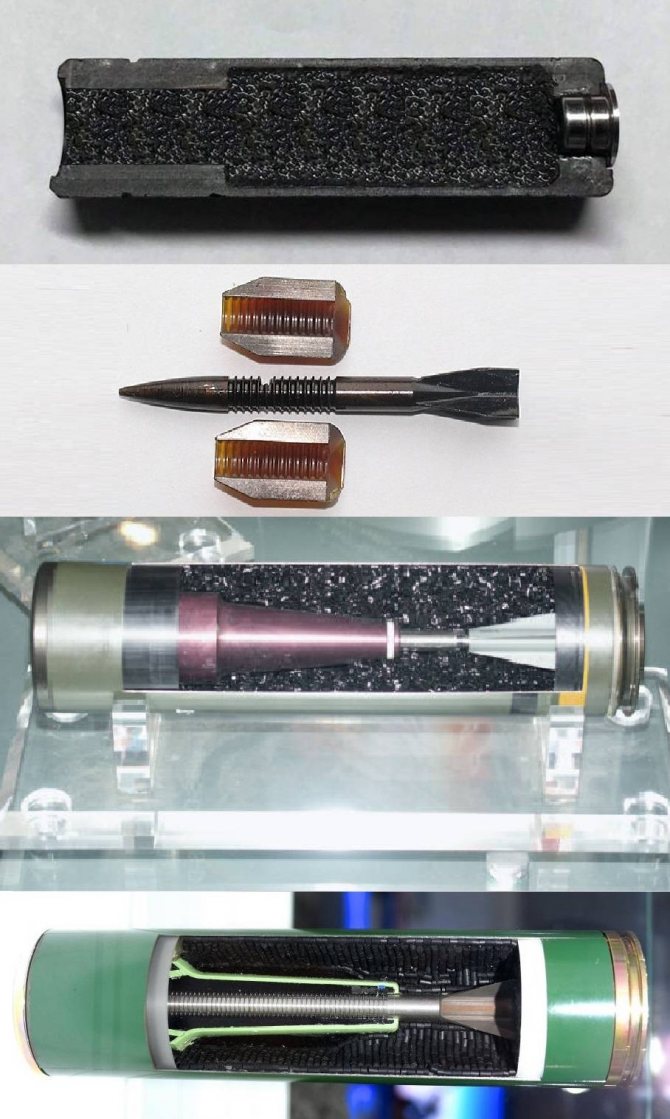

Telescopic ammunition with a tipped sub-caliber bullet
A telescopic cartridge with a fully recessed bullet would give the developers a wide field for experimentation, providing possibilities for development of small arms automatics different from those implemented for weapons with classic ammunition.
Automatic rifle with vertically sliding barrel, developed by Textron under NGSW program for telescopic ammunition.
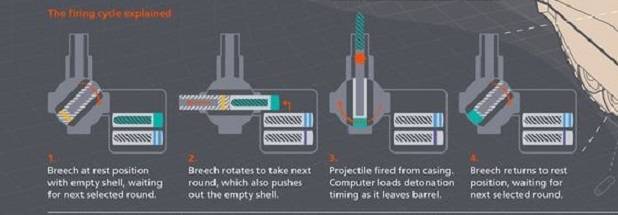

Telescopic Ammunition Feed Scheme for the 40mm CTAS[/size
] To optimize the density of the ammunition in the magazine, the prospective cartridges could be made not only round, but also square or triangular in cross-section.
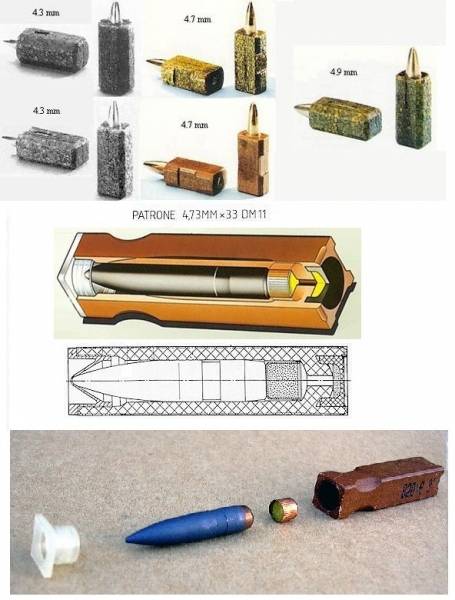

Cartridgeless telescopic ammunition for the German Heckler & Koch experimental G-11 rifle
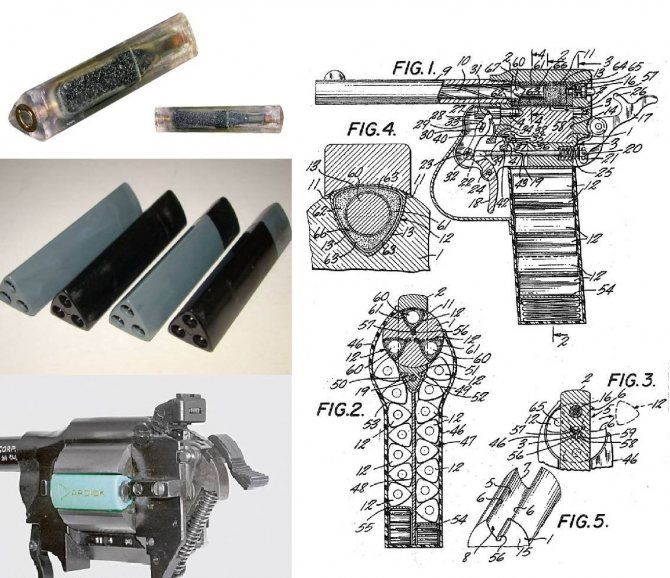

American designer David Dardick's triangular cartridge with revolver feeding pattern.
The casing of the cartridge is likely to be made of polymer, which will reduce the weight of the cartridge, keeping it in line with the low-pulse 5.45x39mm cartridges and, consequently, will not allow for reduction of the cartridge's ammunition.
The proliferation and improvement of computers, as well as specialized software, could lead to sub-caliber ammunition that differs significantly in layout from those developed in the Soviet period.
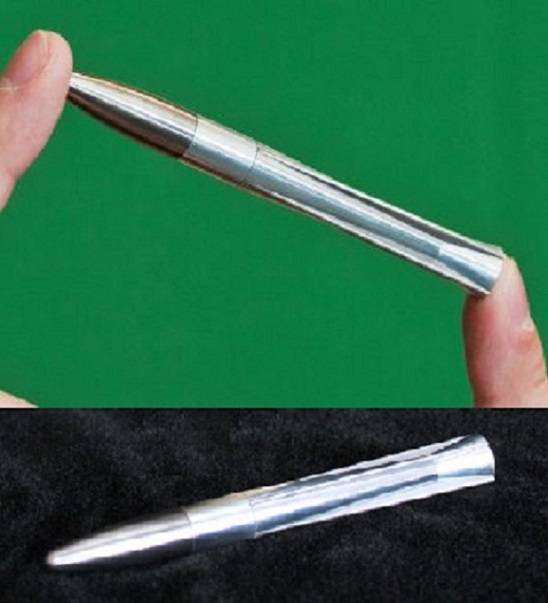

The concept of the guided bullet. It could probably also be considered as the basis for the development of a promising unguided OPF
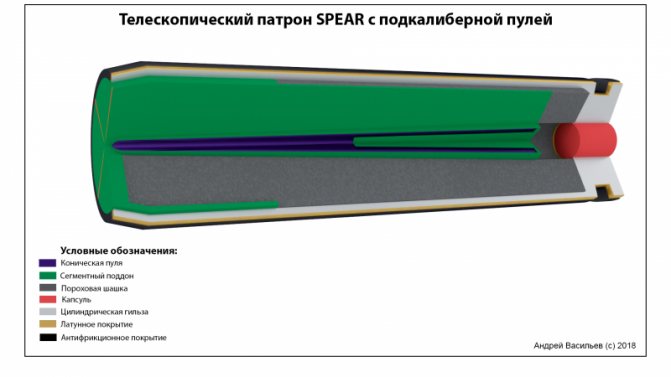

Concept of SPEAR telescopic cartridge with conical projectile, proposed by Alexander Vasilyev
Varying the weight of the cartridge in the range of 2.5-4.5 grams and velocity of the cartridge in the range of 1250-1750 m/s, you can get the initial energy of around 3000-7000 Joules. For three-shot cartridges, the initial energy will respectively be 1500-2000 J per projectile, with a weight of 1.5 grams per projectile. Based on the table above on the comparison of energy and recoil power of various ammunition, we can expect recoil in the range from 7.62x39mm cartridge to 7.62x54R cartridge. At the same time, a line of ammunition with different types of ammunition designed for combat in different tactical situations can be produced.
For example, if the battle is fought in open terrain, with predominantly long-range targets, single-shot cartridges with energies of about 6000-7000 J are used, which are more effective when firing single rounds. In the case of the urban warfare that requires penetration of a big number of barriers (ramparts, relatively thin walls of buildings, bushes) single-shot cartridges with the power of 3000-4500 J are used, that are more effective for the ranges of fire. If there is no need to penetrate barriers but it is necessary to ensure maximum density of fire at close range then triple-shot ammunition is used.
This will give an advantage over NGSW-developed weapons in the full range of weapon ranges, in a variety of tactical situations.
RWS velocities up to 1360 m/s were obtained at the stage of development of this subject by Vladislav Dvoryaninov, in the days of the USSR. So, the combination of the new powders and the cone-shaped barrel could make it possible to achieve PPG velocities of the order of 2000 m/s. At this initial velocity, the time between firing and hitting the target at 500 meters would be about 0.3 seconds, which would greatly simplify the shooting and reduce the impact of external factors on the PSC.
The tungsten carbide-based alloy core of the SRB, combined with the high velocity and small diameter of the SRB, will allow all existing and prospective SIS to be penetrated.
To reduce friction and barrel wear, the SRB tray could be made of modern polymeric materials, such as those used to make the lead belt in the new Russian 30mm automatic gun projectiles.
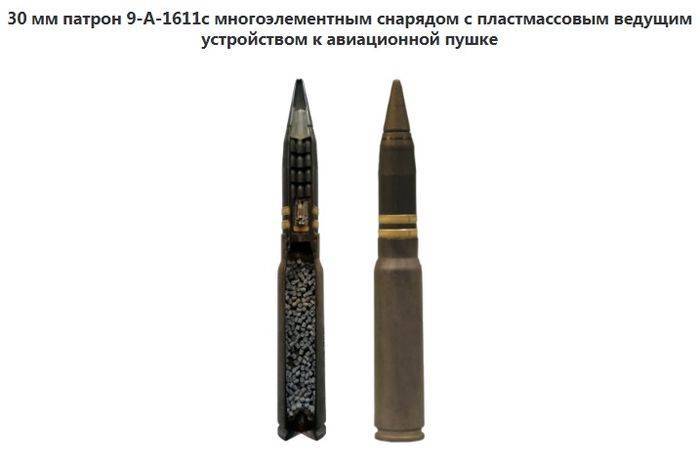

Russian 30-mm shell with a lead belt made of a polymer material
Despite the absence of rifling and the use of OPP trays made of polymer materials, the high bullet velocity and pressure in the barrel, combined with the taper of the barrel, may require the implementation of measures to improve the strength of the barrel of a prospective automatic rifle. Here, too, the smooth bore barrel is a significant advantage, simplifying the technological operations for its production. For example, a combination of a steel or even titanium (hereinafter referred to titanium alloys) barrel with a tungsten carbide alloy insert can be implemented.
The barrel blank can be pre-shaped by 3D printing, followed by machining on high-precision machines.
Scientists from RWTH Aachen Technical University and the Fraunhofer Community Laser Institute (Germany) have begun research on laser powder 3D printing with tungsten carbide and cobalt hard alloys. For this purpose, an upgraded version of the 3D laser printer is used, supplemented by emitters in the near infrared spectrum with a power of up to 12 kW, installed above the working area and heating the sintered layers. The emitters raise the temperature of the upper layer of the consumable material above 800ºC, after which the sintering lasers come into play.
One anticipated application scenario is the integration of cooling channels directly into the manufactured tools and parts. The production of such structures by conventional sintering is either very expensive or technically impossible. The production of such products using the 3D printing technology by selective laser sintering makes it possible to equip them with internal cavities of complex shape.
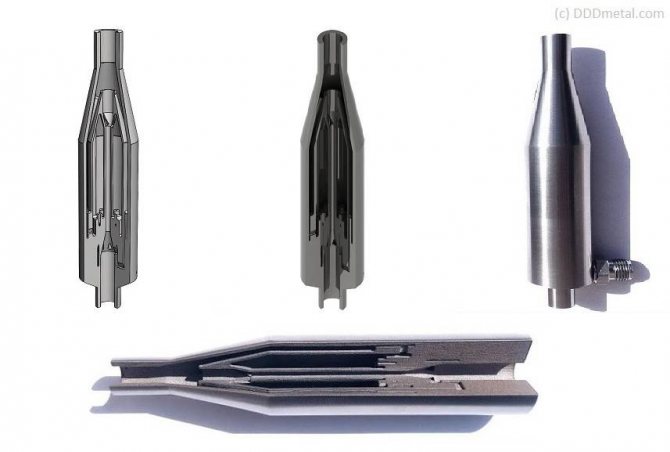

The 3D printing method can be used to produce products with a complex internal structure
Using 3D printing with tungsten carbide and steel/titanium will form internal cavities along the entire length of the barrel, which in turn will ensure its effective cooling, for example by blowing air along its entire length, or even analogous to the heat pipes used in modern electronics.
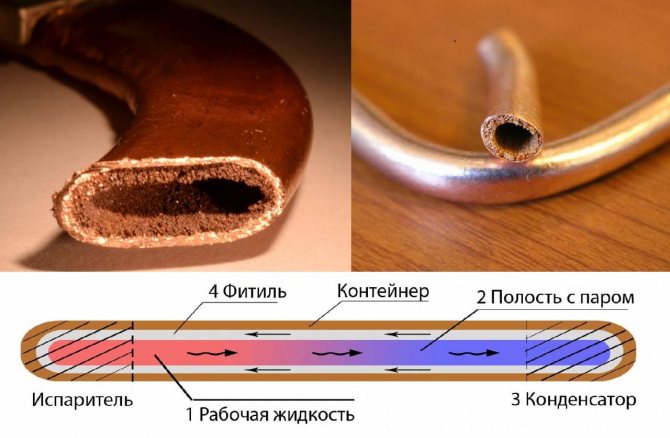

A heat pipe is a smooth-walled or porous closed tube of a thermally conductive metal (e.g. copper) with a easily boiling liquid inside (from liquid helium for ultra-low temperatures to mercury or indium for high temperature applications, in most cases ammonia, water, methanol and ethanol are used). Heat transfer occurs as the liquid evaporates at the hot end of the tube, absorbing the heat of evaporation, and condenses at the cold end, from where it moves back to the hot end. Heat tubes with filler (wicks, ceramics) can work in any position, because the liquid returns to the evaporation zone through the pores of the filler under the action of capillary forces
3D printing can also be used to produce the main parts of the weapon, both plastic and metal. Elements of the receiver can be made with hidden cavities to cool the weapon and reduce its weight. Polymeric elements may be made in the form of a honeycomb structure, again, to reduce the weight of the weapon, and/or for the purpose of additional shock absorption of the recoil impulse.
Increased recoil pulse compared to small arms using low-pulse 5.45x39mm or 5.56x45mm cartridges will require comprehensive implementation of recoil compensation systems to an acceptable level.
First of all, it could be a silencer - muzzle brake compensator (MBC) of a closed type, similar to those that are supposed to be used in the weapons developed under the NGSW program.
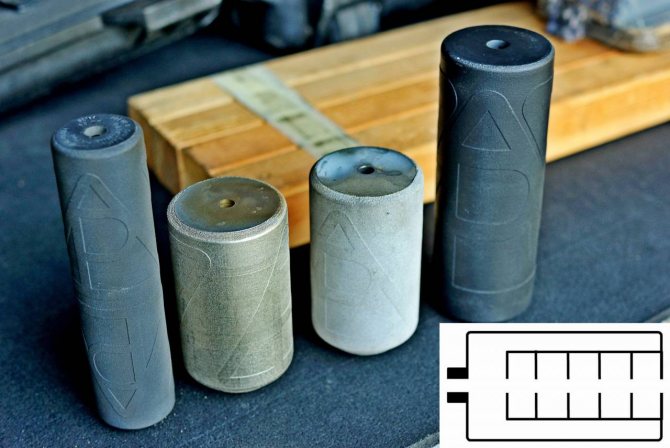

Silencers by American company Delta P Design made by 3D printing from titanium or Inconel alloy
We can also use automated circuits with recoil pulse accumulation (displacement) to provide accurate shooting in short bursts with high rate of fire, or other advanced systems of recoil damping/absorption.
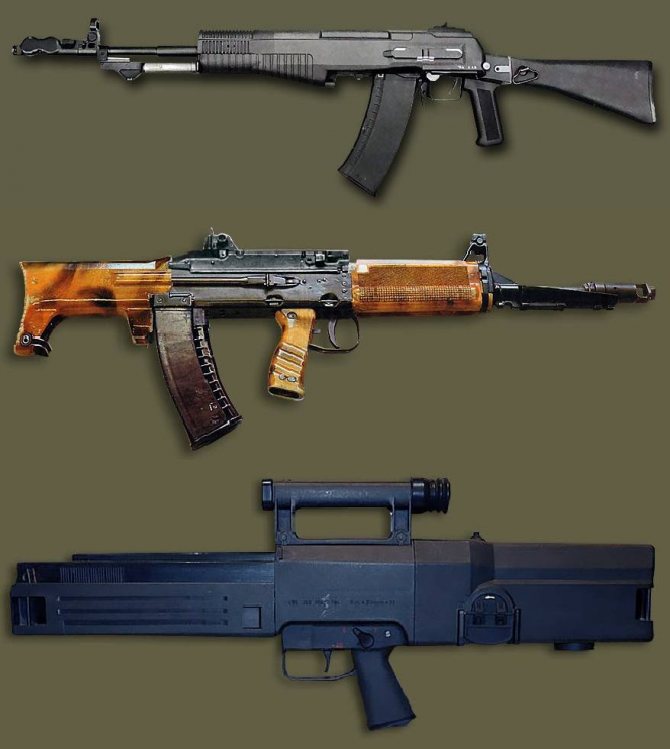

Weapons with displaced recoil pulse: An-94 assault rifle, TKB-0146 assault rifle, G11 rifle
Interesting for consideration is the scheme proposed by Alexei Tarasenko with vibrating recoil absorption.
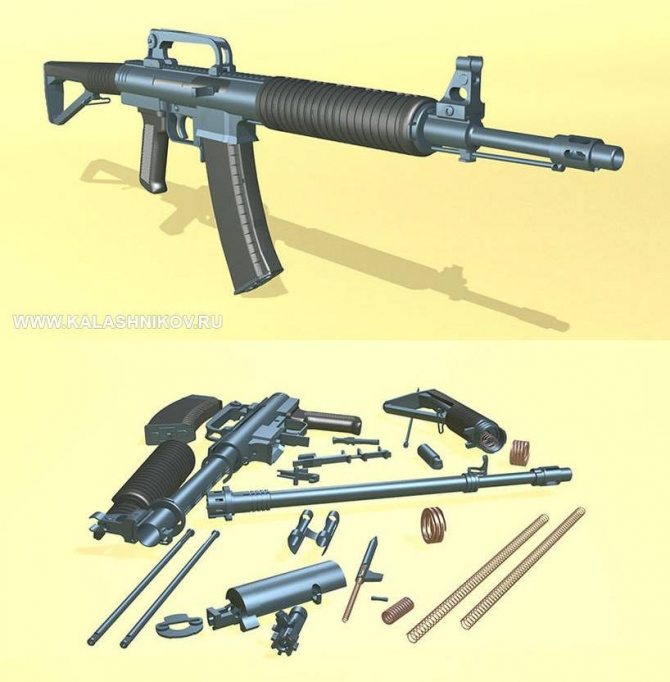

Tarasenko rifle concept with vibrating recoil absorption system
No less of a challenge than the development of the weapon itself and its cartridge is the organization of large-scale production of promising ammunition. Production of promising cartridges can be based both on classic improved automatic rotor lines and on new technological solutions, using 3D printing printers capable of printing metal and polymers, high-speed delta robots, high-precision optical scanning systems, allowing "on the fly" analysis of the received ammunition and sorting it by accuracy class.
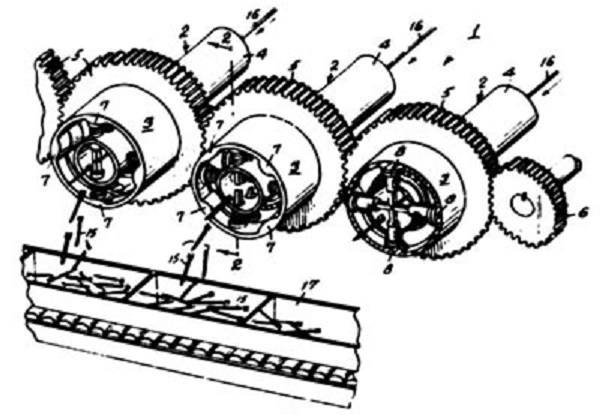

Figure of a production line for the production of tipped subcaliber bullets
Manufacturing plastic bullets on a 3D printer
It can be assumed that the high-volume production of prospective telescopic ammunition is not an insurmountable task, at least because the production of 30 mm caliber APFSDS for automatic weapons in Russia has been well established for a long time, also not produced in single copies. Meanwhile, the Franco-British consortium CTA International already produces telescopic ammunition for the 40-mm CTAS automatic gun, including a version with BOPS, and in the United States the Textron company is preparing to produce telescopic ammunition for small arms under the NGSW program.
Also, you do not have to worry about the lack of tungsten for these purposes - its reserves are large enough in Russia and more than large in neighboring China, with which we still have fairly even partnership relations.
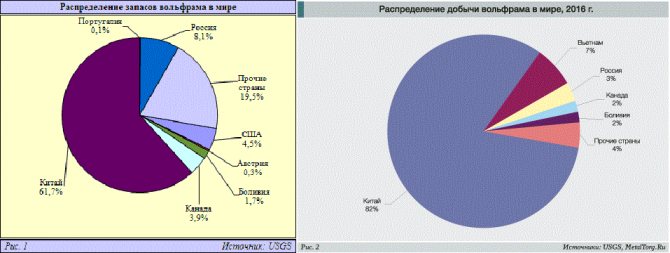

Distribution of Tungsten Reserves and Production in Russia and Other Countries
As for the high cost of prospective weapons and ammunition, it is quite normal for new hardware. In the end, everything rests on the cost-effectiveness criterion, which shows to what extent a promising weapon-ammunition complex is superior to existing models. At the initial stage, special units are equipped with advanced weapons, then the most belligerent units, while the design and technological processes of manufacturing weapons and ammunition are being fine-tuned to reduce their cost.
Without this it is virtually impossible to create a breakthrough weapon-round complex. Let us recall the attitude to the creation of the first automatic rifles: they said that it was impossible to produce so many cartridges to supply the army armed with automatic rifles, and what this led to later on.
History is a spiral. Many designs and technologies that had previously been discarded as unrealizable can be re-examined, taking into account the emergence of new materials and technological processes. It is possible that rethinking the possibility of using feathered subcaliber bullets in promising small arms in combination with a tapered barrel of the Herlich system at a new technological level will allow the creation of small arms that are significantly superior to the existing samples made according to the schemes and technological processes that have become traditional
.
What is the meaning of a tattoo bullet for men
It is clear that most often such an image on his body prefer to stuff it men. Although not always related to the military service and law enforcement agencies.
There are many reasons why representatives of the strong half of mankind wear such a tattoo. All because at the tattoo of the bullet value of the following nature:
- A sign of strength - physical and moral;
- straightforwardness;
- firmness;
- self-confidence;
- The desire to always and in everything to protect their relatives and loved ones.
Considering the above, we can conclude that the bullet tattoo is the choice of people who are confident in their abilities and able to break any obstacles. They believe in themselves to the end, do not doubt their decisions and are willing to prove that their actions - are not wrong.
Pay attention!
Extremely ridiculous and even ridiculous would look a bullet tattoo on a finger or other part of the body from a person who is weak not only physically but also morally. The one who is unable to restrain his own emotions, acting under the influence of momentary desires.
Cartoon bullet tattoos
There is another meaning of the bullet tattoo - it is the ability of a person to keep their emotions under control. You will never see such a man screaming, being in hysterics.
A man who adorns his body with such a drawing always knows exactly what he wants. But he also understands how to achieve his goal, which way will be the shortest and most effective. Such a person is ready to endure virtually any tests that arise on the way to the desired top.
Pay attention!
And also such a person does not accept any denial of his decisions. He is used to it - everything will be as he said.
With such men - bad jokes! After all, he is always ready to fight back his detractors.
What does a tattoo of a bullet mean?
Worn drawing in the form of a bullet is often preferred by members of the stronger sex. Especially such tattoos like the military.


Thus, men show their belonging to the military service and the desire to remain a strong and brave man. Sometimes similar natal images decorate their bodies and women. For them, such a tattoo will symbolize straightforwardness and perhaps even flamboyance.
What is the meaning of the tattoo bullet for women
Do not think that the tattoo bullet - the choice of purely men. Today, female representatives of the weaker half of humanity also relatively often wear such drawings on their bodies.
In this case, the tattoo carries the following meaning:
- firmness of character;
- self-confidence;
- the ability to stand up for oneself;
- self-sufficiency in all its manifestations;
- courage;
- and, again, straightforwardness of character and actions.
Note!
Of course, the bullet is the choice of women who are directly related to the army or security forces. If a representative of the fairer sex does not serve in the army, with a drawing it as if says "I am able to defend myself, I do not need your protection"!
Tattoo of a bullet in the teeth and lips
Therefore, if you see a woman in front of you, on whose body a bullet is painted, you can be sure that in front of you is a strong person. She will not betray her principles, she will always defend her interests. And if you decide to offend her, most likely, she will answer you in the same way.
How to choose a bullet tattoo for your body
When choosing an image, people are often guided by momentary impulses. Although, as they say experienced tattoo masters, you should pause for a few days to finally reflect on your choice and then do not regret it.
If you look at our website tattoo bullets sketches, you can see that there is a huge variety of options for such a drawing.
For example, one of the most popular options is not just a drawing of a bullet, but also realistic traces of it on the body. As an option, the master draws protruding blood. If the tattoo is made in the style of realism, it will even look somewhat intimidating!
By the way!
Such a drawing will choose those who prefer extreme actions. And those who do not care about the opinion of others - so they are willing to even shock them.


Another popular option is the drawing, which depicts a bullet in flight. Such an image can be done in an animated style. A bit humorous. For this purpose, the "shell" is painted with hands and feet, eyes, a sarcastic smile. It is clear that this image on the body is applied only by those who are in harmony with a sense of humor.
Often you can find an image of a "projectile" in the style of old-school. Such a naked picture of a bullet will please:
- brightness;
- colorful;
- animation;
- and unique uniqueness.
If, of course, you prefer to order a unique sketch, rather than just copying your favorite image on the Internet.
By the way!
The old-school style bullet tattoo is relatively often depicted in the mouth, sandwiched between the teeth.
Classification of cartridges
The ammunition used in modern small arms can be divided into several conventional classes, mainly by caliber. When looking at cartridges for military weapons, several conventional classes can be derived:
- Ammunition for pistols has a caliber from 4.5 to 12 mm;
- Ammunition for revolvers is in calibers from 5 to 12 mm;
- Ammunition for assault rifles ranges from 5.45 to 7.62 mm;
- Ammunition for sniper rifles in calibres from 7.62 to 9 mm;
- Special "anti-materiel" ammunition has a caliber of 12.7 to 20 mm.
The ammunition consists of the following parts - projectile (bullet), projectile charge (powder), metal cartridge case and powder igniter (primer). The schematic drawing of a bullet and a cartridge case is enclosed below.
Sketches of a bullet tattoo
How looks a bullet tattoo on the body: a lot of variants of drawing
When choosing a tattoo, you should immediately understand on what part of the body it will be located. Well suited for this:
- legs;
- wrists;
- neck;
- chest;
- back.
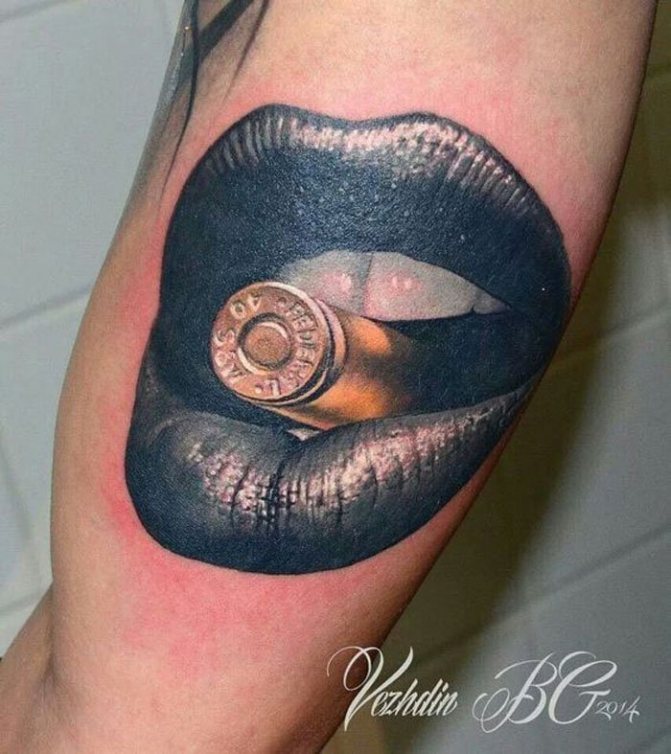

It is obligatory to take into account the size of the tattoo. If you carefully study the examples of drawings and sketches presented on our site, you will surely find an original idea.
You can order a unique sketch directly on our website. We provide a similar service. It is enough to write to a specialist, tell him exactly what you want and, if possible, attach a few drawings that inspire you. The master will create a unique sketch, exactly according to your wishes.
